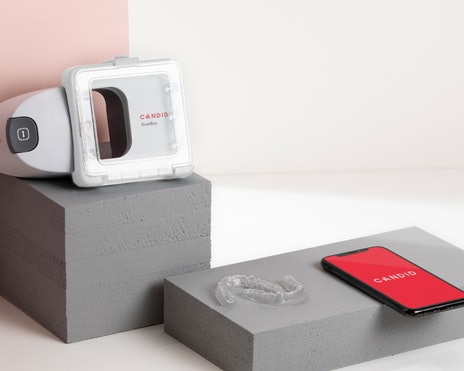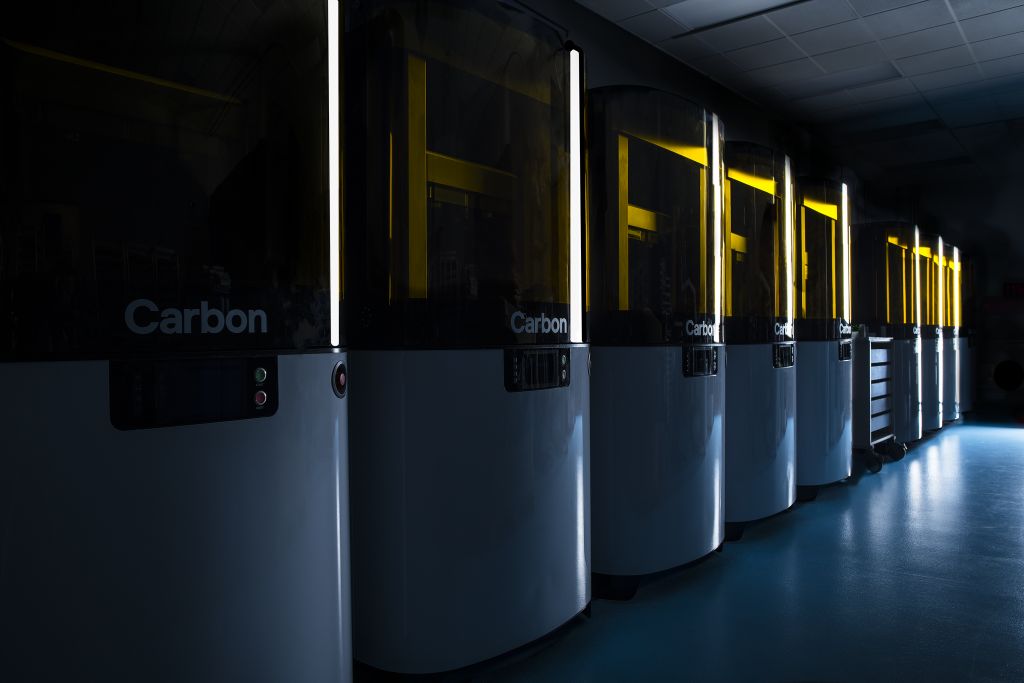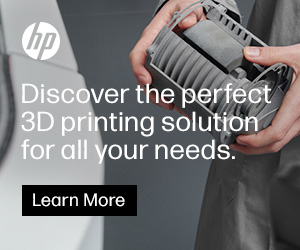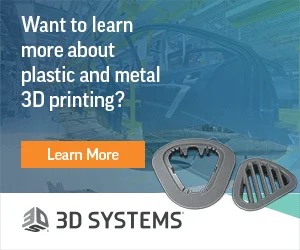Carbon and Candid Partner to 3D Print Models for Clear Dental Aligners
There’s a new partnership in the additive dental industry: Carbon and Candid have announced that they are joining forces to 3D print accurate models for clear aligners more reliably and efficiently. It seems like a match made in teeth-straightening heaven, as oral health digital platform Candid will leverage venture-backed 3D printing unicorn Carbon’s L1 3D printers and Digital Light Synthesis (DLS) technology in its new Candid Pro platform.
“Any one patient requires a series of fully customized and accurate models for their teeth straightening process. By leveraging the L1 Production Solution, we can scale production significantly and produce at record speeds, ultimately meeting the doctor and patient expectations as they anticipate the start of their clear aligner treatment,” Brian Ganey, Candid’s Senior Vice President of Sales, said in a press release. “We’re proud to partner with Carbon whose 3D printing process enables us to produce customized aligners at scale at a cost that is viable for patients.”
The new Candid Pro is what the company refers to as a doctor-driven, “orthodontics-as-a-service” therapy offering for clear aligners, targeted for use by dental and orthodontic practices. The solution covers both ends of the workflow spectrum, using a suite of patient support tools, a patent-pending treatment plan methodology (CandidRx), and a technology platform custom-designed for oral clinicians.
“With Candid Pro, you can drastically increase the number of new cases you start while leaving a lot of the work to us,” the website states.
According to Candid, its clear aligners cost less than some other options, and its new Pro solution also offers the Candid App, a patient monitoring and diagnostic service that makes the process easy to manage. But by using Carbon’s advanced L1 3D printing platform to fabricate millions of customized clear aligner models, Candid is offering dental clinicians a more effective and scalable way to provide its patients with the necessary clear aligner therapy.
“We are proud to partner with Candid to enable them to deliver the best fitting aligners on the market at scale, enabling clinicians to deliver affordable and effective treatment for patients. Carbon’s L1 production system will enable Candid to efficiently and reliably produce millions of highly accurate aligner models and deliver bespoke solutions for each patient at scale,” stated Phil DeSimone, Carbon’s Chief Product and Business Development Officer.
Carbon’s DLS technology uses advanced software, high-quality materials, and versatile 3D printers, such as the large-format L1 system, to achieve functional parts that offer both end-use aesthetics and performance. The L1, released in 2019, has ten times the build volume of Carbon’s M1 printer and five times the build volume of an M2, which makes it good for economically prototyping and printing both large and small parts. According to the release, using the L1 to 3D print models for clear aligners is a good way to lower costs, “allow clinicians to treat more patients with fewer visits,” and give patients a more affordable way to straighten their smiles.
At last year’s Additive Manufacturing Strategies summit, hosted by SmarTech Analysis and 3DPrint.com, industry analyst Scott Dunham, the Vice President of Research at SmarTech, presented an industry forecast for medical and dental 3D printing, in which he stated that the portion of medical and dental applications in the AM industry was a little more than $3 billion dollars combined. He did note that the revenue numbers were going down a little due to the amount of attention being paid to more industrial markets, and predicted a stabilization, but I wonder if there’s any evidence of that now, thanks to the ongoing COVID-19 pandemic. But, Dunham also said that the dental industry as a whole was “fairly mature” in terms of AM adoption, so maybe the numbers are better than expected?
It’s not too late to sign up for AMS 2021, taking place in a virtual format from February 9-10 and featuring an online exhibition hall, nearly 60 expert speakers, and four dedicated 3D printing verticals, including dental/medical AM. Each day will begin with a forecast presentation by a SmarTech analyst regarding the two verticals for the day, so you’ll get to hear a more current take on what the market looks like for 3D printed dental applications like clear aligners. Register now to attend!
(Source: Carbon)
Subscribe to Our Email Newsletter
Stay up-to-date on all the latest news from the 3D printing industry and receive information and offers from third party vendors.
You May Also Like
Simulation Complete: Pioneer Crew Wraps Up Year-Long Mission in 3D Printed Mars Habitat
After 378 days of living in a Mars-like 3D printed habitat, NASA’s Crew Health and Performance Exploration Analog (CHAPEA) crew emerged on July 6, 2024, bringing with them vital insights...
Alquist 3D Learns Some Lessons for the Construction 3D Printing Industry
The demolition of a home 3D printed by Alquist 3D spread like wildfire when it was reported last winter. While many took the opportunity to express their skepticism over additive...
Texas Cracks Down on Illegal Gun Switches, Including 3D Printed Ones
Texas has unveiled Operation Texas Kill Switch, a new initiative to target illegal machine gun-conversion devices, commonly known as “switches.” These tiny devices, often no bigger than an inch, can...
UK Utility Company Launches Hub for Wastewater “Printfrastructure”
With homebuilding serving as the primary marketing vehicle for additive construction (AC), we’re starting to see concrete 3D printing further drive its way into other areas of the architecture, engineering,...




































